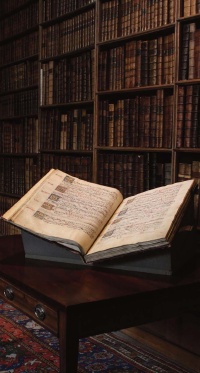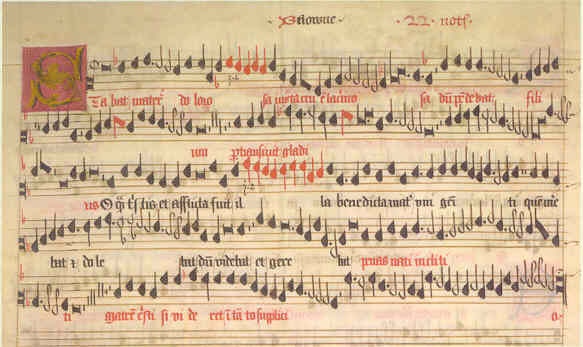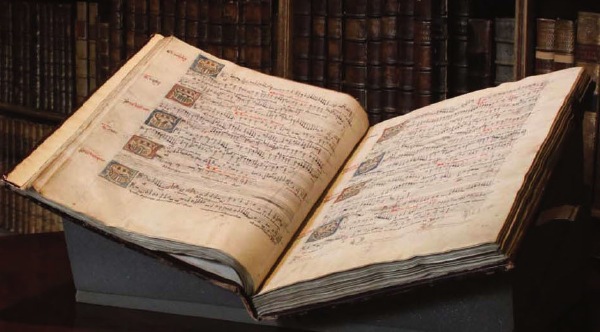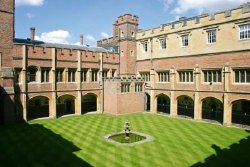


| The Salve ceremony, familiar to worshippers throughout Catholic Europe, lay at the heart of Eton College’s raison d’être as a chantry college: the Eton Choirbook is an eloquent witness to this flowering of devotional culture on the eve of the Reformation. The manuscript is also a work of consummate artistry, copied by an experienced scribe on large vellum leaves, and illuminated by a professional limner. Even in its incomplete state —nearly half of its original 224 leaves have been lost— the Eton Choirbook is the undoubted queen of early Tudor music manuscripts. The manuscript in turn has become eponymous with its parent institution, Eton College. There is one over-riding reason for this: the simple fact of the college's survival. Eton College had originally been a chantry, an almshouse and a school, and it was the college's educational purpose which saved it from dissolution in the 1540s. Other medieval colleges were less fortunate. Arundel College, the most likely provenance of the Lambeth choirbook, was dissolved in th mid-1540s; most of the college buildings were demolished, and the choirbook left Arundel. The other Henrician choirbook, Gonville and Caius College, Cambridge, Ms. 667, originated at the royal college of St. Stephen, Westminster. The only remaining vestige of St. Stephen's is the crypt of its chapel, tricked out in Pugin gothick. The Eton Choirbook is the only one of the trinity of extant early Tudor choirbooks to remain in its original home. (Magnus Williamson) |
